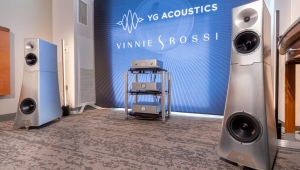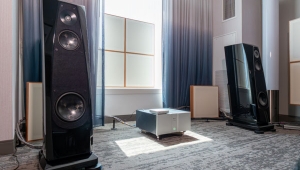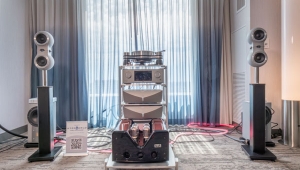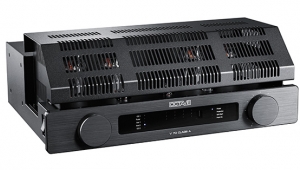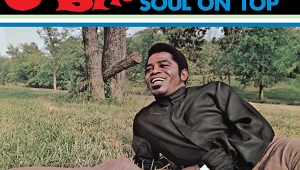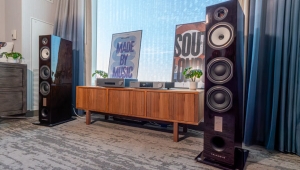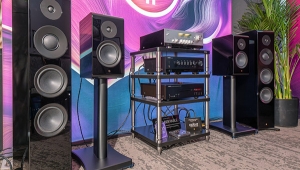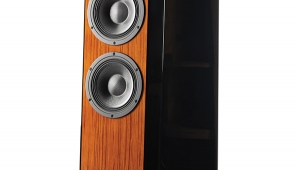| Columns Retired Columns & Blogs |
Musical Fidelity X-24K D/A processor
The standalone digital/analog converter emerged as a product category in 1987 with the appearance of the Arcam Black Box and the Marantz CDA-94, closely followed by the PS Audio Link. The idea was that putting the sensitive D/A-conversion and analog stages in a separate enclosure with its own power supply would maximize the sound quality when compared with packing these circuits in the same box as the transport. However, it turned out that the routing of the digital data between transport and processor in the form of an S/PDIF- or AES/EBU-encoded bitstream could introduce word-clock jitterwhich undid much of the sonic advantages. (See "Bits is Bits" by Malcolm Hawksford and Chris Dunn, Stereophile, March 1996.)
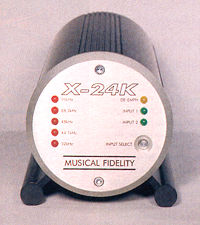 Every good engineer likes a challenge, so by 1997 the best transport/processor combinations had no more jitter than the best one-box CD players, and offered dynamic range approaching 20 bits and resolution better than that. But also by 1997, the market for standalone DACs had shrunk almost to zero. For with the introduction of DVD-Video, audiophiles had access to a medium that at long last could carry higher-resolution digital data than the CD. With word lengths of up to 24 bits compared with the CD's 16 and a sampling frequency that could range up to 96kHz, DVD-Videos could be used for high-resolution two-channel music signals. And they were, with Classic Records and Chesky releasing 96k-sampled material—DADs and Super Audio Discs, respectively—throughout 1998.
Every good engineer likes a challenge, so by 1997 the best transport/processor combinations had no more jitter than the best one-box CD players, and offered dynamic range approaching 20 bits and resolution better than that. But also by 1997, the market for standalone DACs had shrunk almost to zero. For with the introduction of DVD-Video, audiophiles had access to a medium that at long last could carry higher-resolution digital data than the CD. With word lengths of up to 24 bits compared with the CD's 16 and a sampling frequency that could range up to 96kHz, DVD-Videos could be used for high-resolution two-channel music signals. And they were, with Classic Records and Chesky releasing 96k-sampled material—DADs and Super Audio Discs, respectively—throughout 1998.
By 1997, therefore, there seemed little point in an audiophile investing big bucks in a separate processor that would not operate above a 48kHz sampling frequency. And confounding the matter, it was open to question whether any DVD-Video players would offer a 96kHz data output "in the clear," as the record industry was insisting that, in order to foil would-be pirates, some form of encryption be used for DVD-Audio datalinks (see Sidebar).
By the end of 1998, however, a number of DVD-Video players—from Denon, California Audio Labs, Pioneer, Theta, and Panasonic—offered unencrypted 96kHz data outputs, running a conventional S/PDIF or AES/EBU output at twice the usual speed/bandwidth. The necessary 96kHz-compatible standalone processors are starting to appear. In January, Kal Rubinson auditioned the $350 MSB Link; this month, I am writing about the new $450 X-24K from British company Musical Fidelity; and in future issues we will report on how the 96k-compatible versions of previous state-of-the-art processors from Wadia, Muse, Theta, and Mark Levinson perform. (And Jonathan Scull reports on the sound of the 96kHz- and 192kHz-capable version of the dCS Elgar elsewhere in this issue.)
Technology
The X-24K was launched at the 1998 Heathrow Renaissance Show. An extruded aluminum cylinder somewhat longer than the rest of Musical Fidelity's "X" series of components houses the circuitry, with AC power provided by a 12V wall wart. On the front panel are eight LEDs to indicate sampling frequency (32kHz, 44.1kHz, 48kHz, 88.2kHz, or 96kHz), data lock on input one or two, and whether or not the incoming datastream is pre-emphasized.. On the back panel are the analog outputs, two coaxial S/PDIF input jacks, and a TosLink optical input, which is in parallel with input 1. There is also a passthrough data output.
Inside the cylindrical case are four printed circuit boards. A small one behind the front panel carries the indicator LEDs; an even smaller one behind the rear panel carries the TosLink optical input circuitry. The other two, both double-sided, run almost the full length of the chassis. The lower one carries most of the power-supply components and some TTL "glue logic" chips, the upper one the data receiver and DAC chips on its underside and the clock crystal, a 7805 5V regulator chip, and the analog output stages on its top. The receiver is the Crystal CS8414, the DAC/digital filter the Burr-Brown PCM1716, both of these surface-mount chips.
The CS8414 is a new 5V CMOS device intended to work with S/PDIF single-ended and AES/EBU balanced digital datastreams. According to Musical Fidelity's white paper on the X-24K, this chip analyzes the incoming data to determine its sampling frequency. It then locks to it with a second-order phase-locked loop, (attenuating jitter artifacts by up to 30dB), recovers the clock and synchronization signals, and de-multiplexes the audio and digital data.
- Log in or register to post comments
















